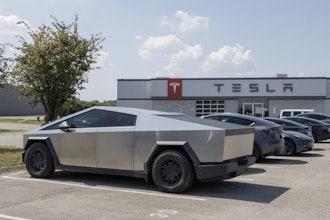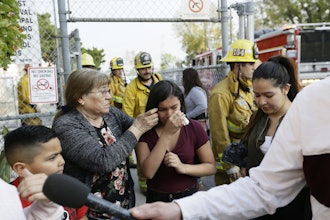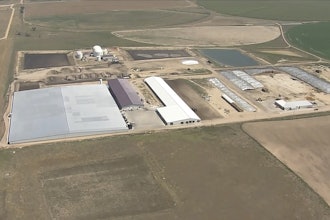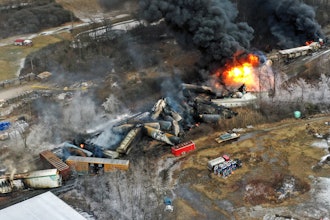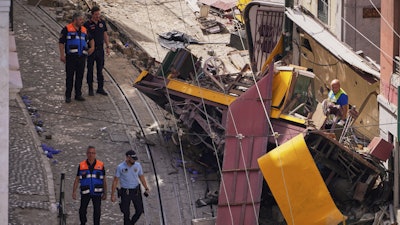
LISBON, Portugal (AP) — Portuguese officials focused Thursday on establishing the causes of the crash of a Lisbon streetcar popular with tourists that killed 16 people and injured 21, five of them seriously.
"The city needs answers," Lisbon Mayor Carlos Moedas said in a televised statement about Wednesday's derailment.
The downtown streetcar, which is known as Elevador da Gloria and is a major attraction for tourists packing the Portuguese capital during the summer season, came off the rails during the evening rush hour. The crumpled wreckage was cordoned off as investigators sifted through the wreckage, took photographs and pulled up a metal cable from beneath the rails that climb one of Lisbon's steep hills.
Police, public prosecutors and government transport experts are investigating the causes, Prime Minister Luis Montenegro said, standing next to the mayor. The company that operates the streetcar service, Carris, said that it has also opened its own investigation. It said that scheduled maintenance had been carried out.
As well as those, the mayor said he would ask for an investigation from an outside independent body.
The electric streetcar, technically called a funicular, is harnessed by steel cables, with the descending car helping with its weight to pull up the other one. The car can carry more than 40 people, seated and standing.
Officials declined to comment on whether a faulty brake or a snapped cable may have prompted the descending streetcar to careen into a building where the steep road bends.
Talk of possible causes is "mere speculation," Moedas, the mayor, said.
The government's Office for Air and Rail Accident Investigations said that it was working with other bodies on finding out why the streetcar crashed and would issue a preliminary statement on Friday.
Lisbon's Civil Protection Agency said earlier Thursday that the death toll had risen to 17. It later corrected that to 16, saying there was a lapse due to the duplication of available information.
The dead were all adults, Margarida Castro Martins, head of Lisbon's Civil Protection Agency, told reporters. She didn't provide their names or nationalities, saying that their families would be informed first.
The injured were men and women between the ages of 24 and 65 as well as a 3-year-old child, she said.
The injured included Portuguese people as well as two Germans, two Spaniards and one person each from France, Italy, Switzerland, Canada, Morocco, South Korea and Cape Verde, she said.
The range of nationalities reflected how big a draw the renowned 19th-century streetcar was for tourists. Locals also commonly use the streetcar, which goes up an 18% gradient.
Portugal observed a national day of mourning Thursday after the capital's worst disaster in recent history.
"This tragedy … goes beyond our borders," Montenegro, the prime minister, said at his official residence. He called it "one of the biggest tragedies of our recent past."
British tourist heard a 'horrendous crash'
Felicity Ferriter, a 70-year-old British tourist, had just arrived with her husband at a hotel near the crash site and was unpacking her suitcase when she heard "a horrendous crash."
"We heard it, we heard the bang," she told The Associated Press outside her hotel.
The couple had seen the streetcar when they arrived and intended to ride on it the next day.
"It was to be one of the highlights of our holiday," she said. "It could have been us."
She said that the emergency response was "amazing." Police and ambulances quickly "flooded in," she said.
Italian tourist won't ride one again
Francesca di Bello, a 23-year-old tourist from Italy on vacation in Lisbon with her family, had been on the Elevador da Gloria a few hours before the derailment.
They walked by the crash site on Thursday, expressing shock at the wreckage. Asked if she would ride a funicular again in Portugal or elsewhere, Di Bello was emphatic. "Definitely not," she said.
Though authorities gave no details about those killed, the transport workers' trade union SITRA said that the streetcar's brakeman, André Marques, was among the dead.
One of Lisbon's big tourist draws
The streetcar is popular for its short and picturesque trip a few hundred meters up and down one of the city's steep hills.
Teams of pathologists at the National Forensics Institute, reinforced by colleagues from three other Portuguese cities, worked through the night on autopsies, which were expected to be concluded early Thursday, officials said. The injured were admitted to several hospitals in the Lisbon region.
"It hit the building with brutal force and fell apart like a cardboard box," witness Teresa d'Avó told Portuguese television channel SIC. She described the streetcar as out of control and seeming to have no brakes, and said she watched passersby run into the middle of the nearby Avenida da Liberdade, or Freedom Avenue, the city's main thoroughfare.
Emergency officials said all victims were pulled out of the wreckage in just over two hours.
Service halted as inspections ordered
The service, inaugurated in 1885, runs between Restauradores Square and the Bairro Alto neighborhood renowned for its nightlife. The Elevador da Gloria is classified as a national monument.
Lisbon's City Council halted operations of three other famous funicular streetcars in the city while immediate inspections were carried out.
Lisbon hosted around 8.5 million tourists last year, and long lines of people typically form for the brief rides on the popular streetcar.
European Union flags at the European Parliament and European Commission in Brussels flew at half-staff. Multiple EU leaders expressed their condolences on social media.









